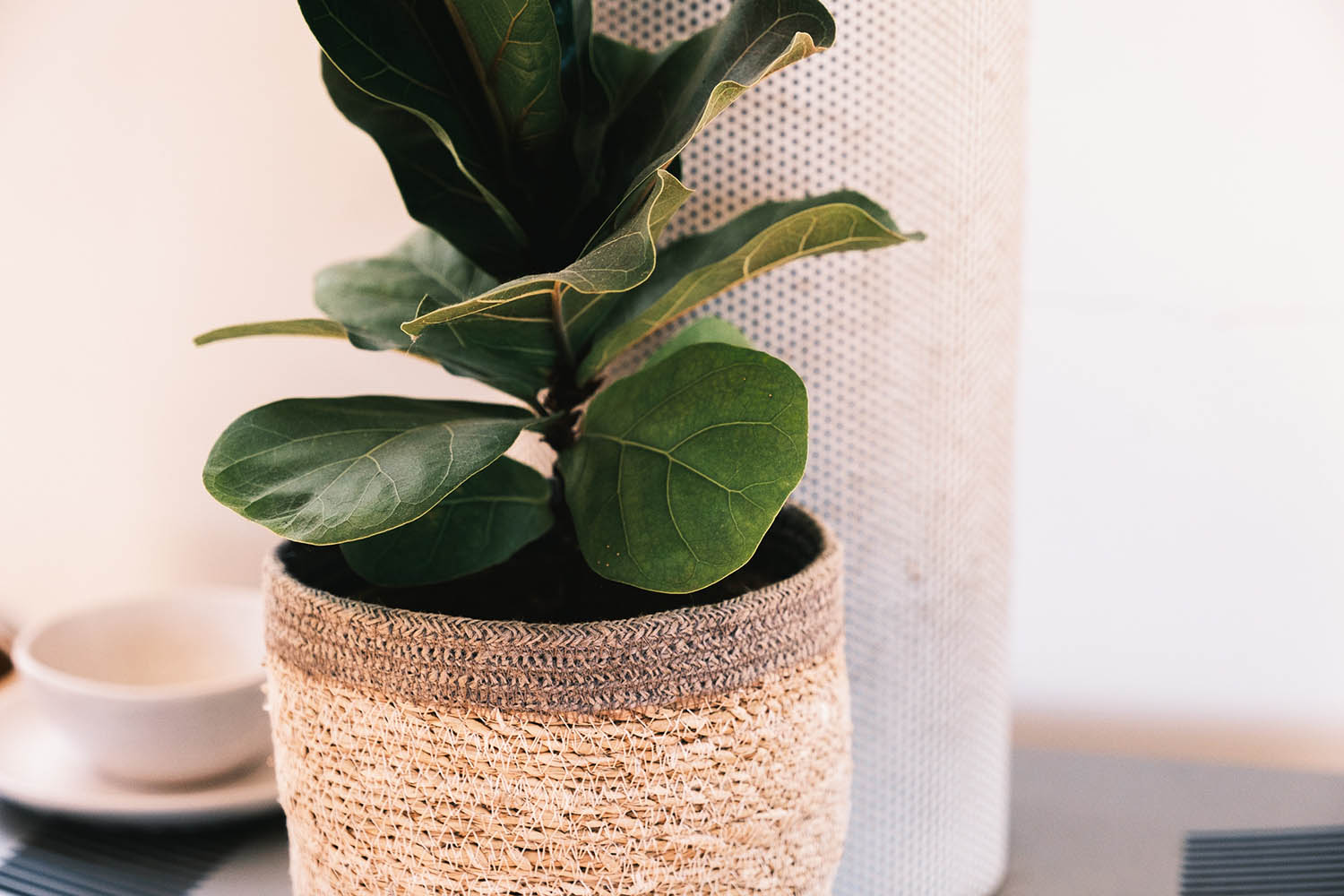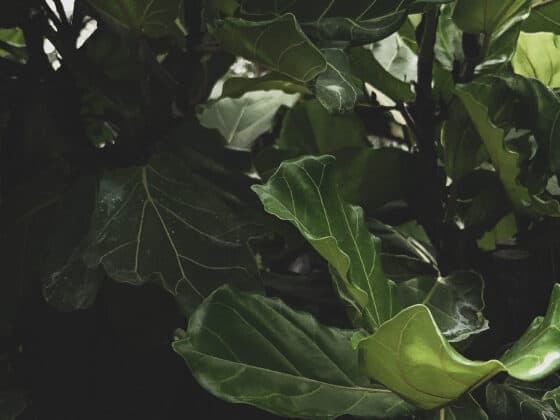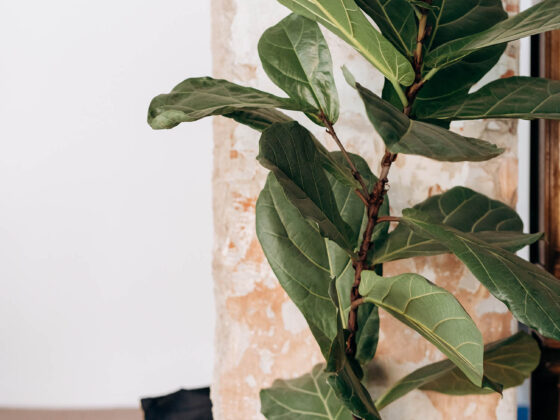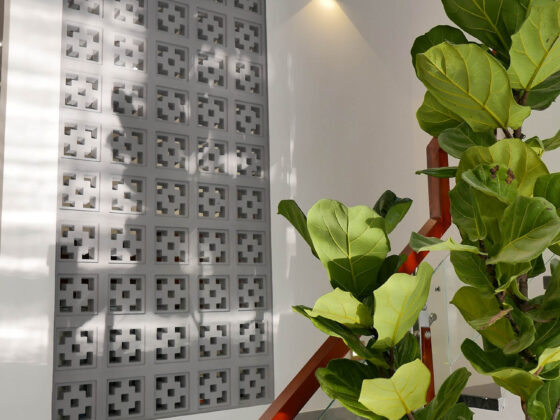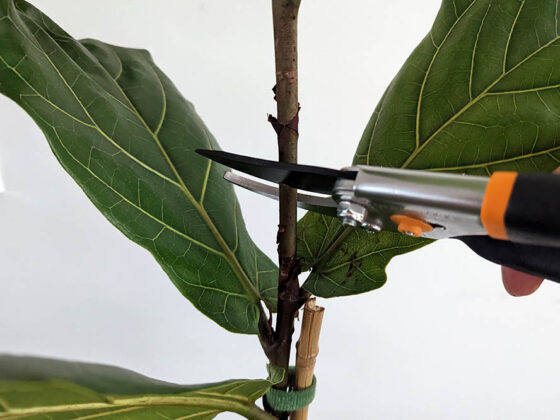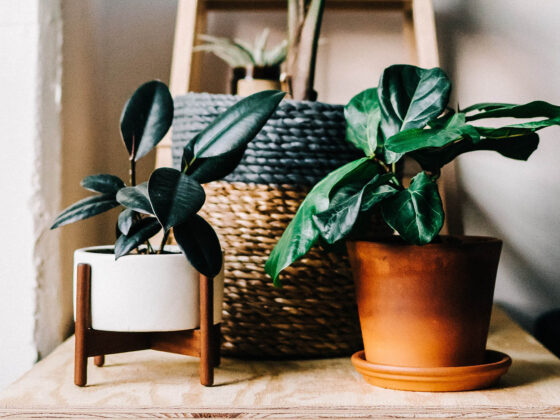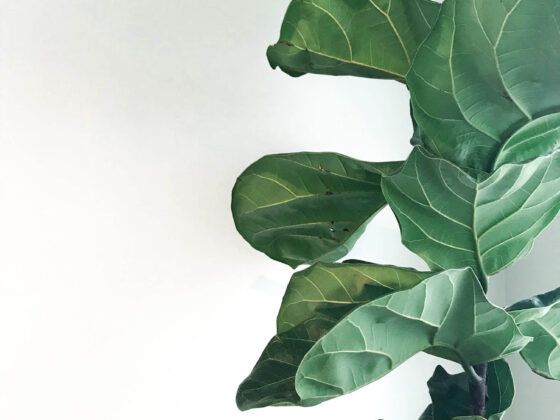Propagating your Fiddle Leaf Fig (Ficus lyrata) is actually a pretty straightforward endeavor. A great time to undertake this task is when you prune your Fig back since you can often utilize the cut pieces as the unrooted cuttings. However, there seems to be some confusion about what exactly is necessary to propagate and grow a cutting into a new, fully grown Fiddle Leaf Fig.
Single, rooted Fiddle Leaf Fig leaves can live for many months or years but won’t ever be able to put out any additional new growth. This is because a Fiddle Leaf Fig requires at least one auxiliary (or lateral) bud, located at a node of the plant’s stem, to create new tissue and grow additional branches and leaves.
Unfortunately, this single leaf method sometimes gets lumped in with legitimate ways of propagating Fiddle Leaf Figs, leaving people disappointed after being led astray. In this article, I’ll explain in more depth why the single leaf method does not work and cover some better ways to propagate your Fig.
Can You Propagate a Fiddle Leaf Fig?
Let’s start with the basics. Propagation is a method of taking a piece of an adult plant and forcing it to root out and grow into a new, separate specimen. This is most often achieved by pruning off a plant’s growing tip and allowing it to root in water or soil.
Alternatively, you can take just a piece of the stem and root it out, as long as that section contains at least one node or auxiliary bud, where new tissue is created. There are other methods of propagating, depending on the plant species, but in general, these are basic methods for Fiddle Leaf Figs.
Once your Fig cutting has rooted out and is planted in new potting soil, the apical meristem (or growth tip) will continue to push new growth, or in the case of a stem piece, the node will begin to push new growth from the lateral bud it contains. Over time, as your Fig establishes in its new pot and starts putting out new growth, it becomes self-sufficient and will grow into a full-sized adult Fiddle Leaf.
What is A Node?
Nodes are small areas of tissue that contain the auxiliary (or lateral) buds required to establish new growth. These nodes are typically located just above where a leaf petiole (the stem of the leaf) attaches to a stem or branch of your Fiddle Leaf Fig. The places between the nodes are aptly named “internodes,” which just indicates the stretch of the stem in between nodes.
Internodes are usually where you want to aim when making any pruning cuts so that nodes below the cut won’t be damaged and can be activated into pushing new growth. As long as the stem piece you are trying to propagate contains at least one node, you have a chance of successfully rooting out the cutting and growing it into a whole new plant.
What’s With the Single Leaf Method?
Confusion enters the conversation with the claim of the single-leaf propagation technique. This is mainly because you can quite easily root out a single leaf without any issue, just by placing it in a glass of water.
Because the leaf is rooted, you can claim that you can successfully root out a single Fig leaf. However, that’s all it is ever going to be. Sometimes called a “blind cutting,” these single leaves completely lack any nodes or auxiliary buds necessary for producing new tissue growth. So, while your single leaf may live a long time as a “rooted cutting,” it will never grow into a new plant.
In some cases, this technique has been utilized and commercially marketed to great effect. For example, the Sweetheart Plant (Hoya kerrii) has leaves shaped like hearts. When rooted out individually, it looks like a small green heart has been planted in an often adorably tiny pot, making an excellent gift for a significant other on Valentine’s Day or an anniversary.
They can often stay planted in the same pot for years but never grow into anything resembling an adult Hoya plant. Similarly, if you do the same with a Fig leaf, you’ll always just have a Fig leaf. To properly propagate your Fiddle Leaf into a fully-functioning new plant, you need to take cuttings that have all the necessary parts. Let’s dive into that next.
How to Propagate Fiddle Leaf Figs
If you want to successfully propagate new Figs from cuttings, you first need to know what a good cutting looks like and root it out in water or soil.
Take a Good Cutting
As I mentioned above, as long as a cutting has a bit of stem with at least one node present on it, there is a chance you can turn that into a new plant. However, I like to take larger cuttings to increase my chances of rooting them out.
When making cuts, be sure to use only clean, sterilized garden shears or scissors to avoid spreading any disease to your cuttings. I like to make my cuts straight across to minimize the size of the wound and speed up recovery time for the plant.
The easiest method of taking a cutting is to remove the growing end of a branch from your adult Fiddle Leaf. Often, when pruning for height or to encourage branching, we take a significant portion of a stem off the plant, and it is usually large enough to have multiple leaves and nodes along its length.
I like this type of cutting because there is minimal damage from pruning and the growth tip remains intact at the top of the cutting. As this cutting roots out, the growth tip will resume pushing new growth, and you can wait until the plant has established an entire root system in the soil before pruning the tip to encourage branching from lower nodes.
If you have a particularly long portion of stem or branch you removed from your Fig, you can cut that into multiple pieces, each with a few leaves and two to three nodes. This is a great method if you want to propagate more than one plant at a time. These cuttings will root out the same way, but because the top has been cut, as new growth emerges, it will be pushed from the few nodes below this top cut rather than from an intact apical meristem (growth tip).
Either way, as long as your cutting has nodes on it, it can turn into a full plant. Also, by leaving a leaf or two on each cutting, your plant will continue photosynthesis, allowing for more energy to be utilized by the cutting as it is working to produce new roots. Once you have cuttings in hand, you can choose to root them out in either water or soil.
Water Propagation
My preferred method of propagating Fiddle Leaf Figs is setting them in water. I find it less work upfront, with the added benefit of seeing the new roots developing over several weeks.
To propagate in water, all you need to do is place each cutting into a small water-filled glass or vial and set them in an area that receives a lot of bright, indirect light. Over time, new roots will begin to emerge from the cut portion of the stem submerged in the water.
Once these new roots get to about three inches long, you can transplant your now-rooted cutting to a small pot filled with high-quality potting soil, water it in, and allow your new plant to root out and establish in its new container.
I live in an area with pretty decent tap water, so I usually just use that to fill my propagation jars, but if you don’t trust the quality of your tap water, you can use bottled water. Change the water every few days (or at least once a week) over the four to six weeks it will take your cuttings to form new roots. This will help keep the burgeoning roots healthy and free of rot.
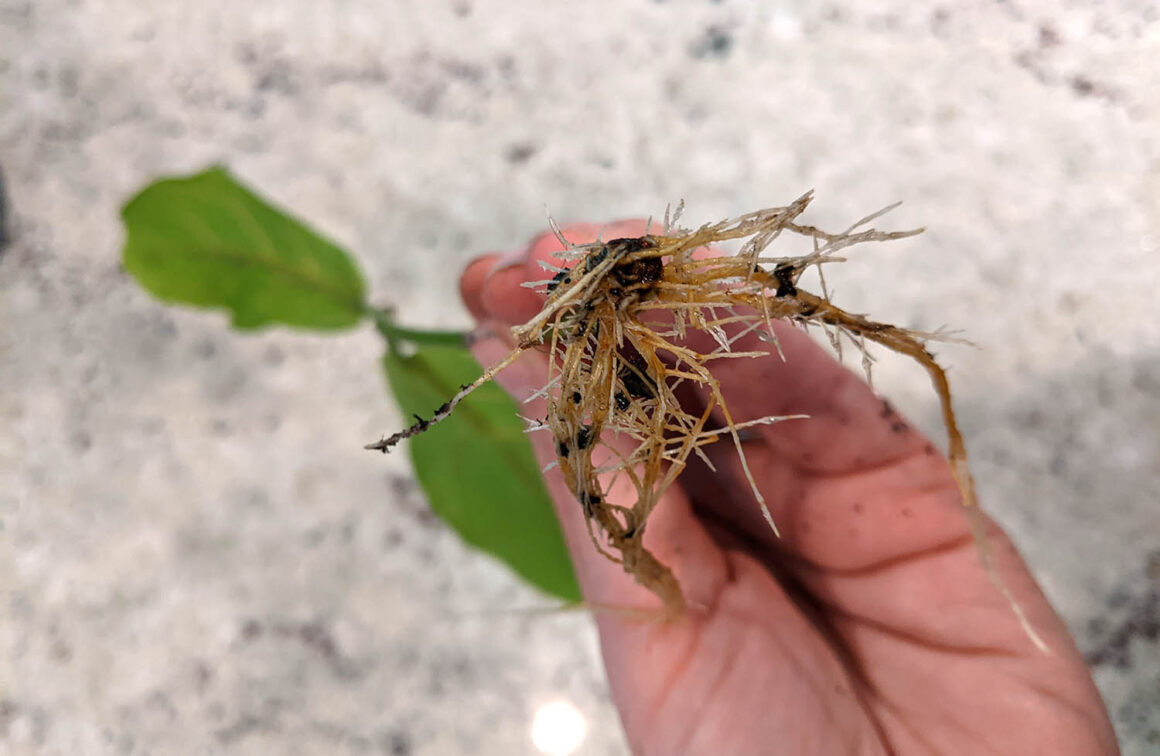
Soil Propagation
Another good way to root out your cuttings is by soil propagation. Rather than allowing new roots to form in water, you skip that step and just stick the bare ends of your cuttings into potting soil and let the roots grow directly into the substrate.
This eliminates the need for a second transplant (from water to soil), and some claim that the root systems grow stronger. As long as you keep the conditions right, this can be a quicker way to root out your cuttings, as well.
To get started, fill a propagation tray or small pot with a well-drained potting soil. This is important because you will be keeping the soil moist but not overly wet throughout this entire process. Water the soil into the tray or pot and allow it to drain well.
I recommend using growth hormone on the bottom ends of each cutting to help with root growth. Fiddle Leaf stems can often be a bit woody, so growth hormone has been known to speed up the development of tender roots on tougher stem material. It isn’t required, but if you want to try it out, just dip the cut ends into the rooting powder, gently tap the excess off, and stick the coated end into the soil.
Poke the cut end of each cutting down into the soil, depending on how you arrange them. You usually want at least two inches of your cutting submerged in the soil, so you might need to remove a leaf or two to get that length. Typically, if using a tray, you place one cutting per cell. If you use a round pot, you can stick multiple cuttings spaced evenly apart to create a “multi-stemmed” Fiddle Leaf Fig plant.
Place the container of cuttings in a spot that gets lots of bright, indirect light (some morning or evening sun is fine). The key to good rooting is to keep the soil warm and evenly moist. You can use a seedling mat to gently heat the soil if using a propagation tray. Just be mindful that the soil will dry out faster, so you need to keep an eye on it.
Some folks like to place their cuttings in soil and then use a plastic bag or cloche to keep the environment around the cuttings warm and humid. If you decide to use plastic, just make sure it is propped up with some stakes or twigs to avoid too much contact with the Fig leaves. You want to avoid rot, mold, or mildew.
Over the next several weeks, keep an eye on your cuttings, ensuring the soil is moist and that the fragile plants aren’t subjected to extreme temperature or too much sunlight. Within about four to six weeks, you should see new roots forming. Although hard to tell in the soil, you can gently tug on your cuttings. If they resist coming out of the soil, they likely have a root system holding them in.
Your new plants will root out in the containers they were placed in after a few months. If you used a propagation tray, once you see roots coming out of the bottom of the tray, you can transplant your new Figs into larger containers.
Final Thoughts
Although there are a few different ways you can successfully turn one Fiddle Leaf Fig into many, the single leaf method is not one of them. Aside from rooting out and surviving on its own, it will never grow into a full-sized plant, and you will always just have a rooted leaf to show for your trouble.
Instead, any time you prune back your adult Fiddle Leaf, use the water or soil propagation methods to create brand new Figs for your home or friends. Just make sure your cuttings are clean and healthy, with a least a couple of nodes on them, and within a few months, you’ll have another vibrant Fiddle Leaf to add to your collection. Good luck!






